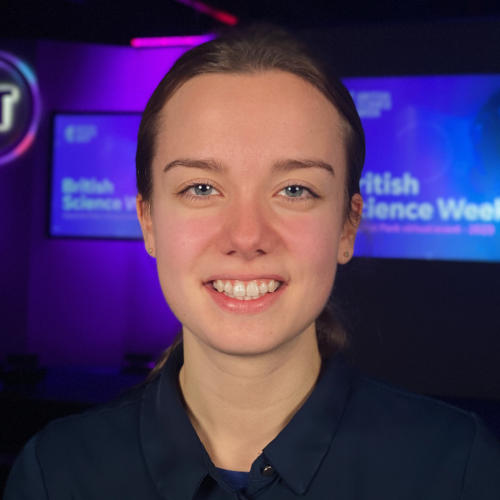Day 5: Accessibility » More questions

Abi G (host): Take a look at some more questions and answers relating to Accessibility below...
Question:
Are there any common misconceptions about digital accessibility?
Are there any common misconceptions about digital accessibility?


Answer:
I think the biggest misconception about digital accessibility is that it's solely about improving the experience for people with disabilities. It should be about improving the experience for all people, including those with minor or major impairments that may be short or long term. Although it's important to provide textual descriptions of images (alt-text) and support keyboard-only navigation, I think it's even more important to make sure the text and icons are presented at a big enough size that the vast majority of the population can perceive them quickly and with certainty. Although the Web Content Accessibility Guidelines cover many factors that are important for digital accessibility, they unfortunately do not specify a minimum size for text or icons. This is an area that I am working on, and the tool that I have developed to check that text and icons are big enough is called Clari-Fi.
I think the biggest misconception about digital accessibility is that it's solely about improving the experience for people with disabilities. It should be about improving the experience for all people, including those with minor or major impairments that may be short or long term. Although it's important to provide textual descriptions of images (alt-text) and support keyboard-only navigation, I think it's even more important to make sure the text and icons are presented at a big enough size that the vast majority of the population can perceive them quickly and with certainty. Although the Web Content Accessibility Guidelines cover many factors that are important for digital accessibility, they unfortunately do not specify a minimum size for text or icons. This is an area that I am working on, and the tool that I have developed to check that text and icons are big enough is called Clari-Fi.
Question:
Can you give an example of a company or a product that has improved accessibility in the past few years?
Can you give an example of a company or a product that has improved accessibility in the past few years?


Answer:
Unilever have recently made huge improvements in making their e-commerce images more visually accessible. More detail on this story is available on the University of Cambridge's website.
Unilever have recently made huge improvements in making their e-commerce images more visually accessible. More detail on this story is available on the University of Cambridge's website.
Question:
What impact can digital accessibility have on society as a whole?
What impact can digital accessibility have on society as a whole?


Answer:
It's huge. Digital accessibility impacts us all. From people with accessibility requirements from birth, to our changing needs as we age, to services broadly termed 'accessible' that everyone benefits from (~80% of Netflix viewers make some use of subtitles, for example). The impact of products and services that address digital accessibility needs can range from enhancing entertainment experiences to being utterly life changing. We all have a vested interest in ensuring companies and service providers make digital accessibility a priority.
It's huge. Digital accessibility impacts us all. From people with accessibility requirements from birth, to our changing needs as we age, to services broadly termed 'accessible' that everyone benefits from (~80% of Netflix viewers make some use of subtitles, for example). The impact of products and services that address digital accessibility needs can range from enhancing entertainment experiences to being utterly life changing. We all have a vested interest in ensuring companies and service providers make digital accessibility a priority.
Question:
What are some examples of digital accessibility features?
What are some examples of digital accessibility features?


Answer:
There are many accessibility features available pre-installed on almost every device we use nowadays. As well as the specialist asisitve software and functions, such as screen readers, there are also many other features that originally started as accessibility features. Dark mode and voice control (Siri, Google Assistant, Alexa etc) are two great examples of this. As we have seen from their widespread adoption into the mainstream, these are features that don't just make things easier for those with disabilities, they improve the experience for everyone.
There are many accessibility features available pre-installed on almost every device we use nowadays. As well as the specialist asisitve software and functions, such as screen readers, there are also many other features that originally started as accessibility features. Dark mode and voice control (Siri, Google Assistant, Alexa etc) are two great examples of this. As we have seen from their widespread adoption into the mainstream, these are features that don't just make things easier for those with disabilities, they improve the experience for everyone.
Question:
What sort of accessibility qualifications can you get?
What sort of accessibility qualifications can you get?


Answer:
Digital Accessibility is a new field as a profession. It hasn't been established well yet. There are short courses and even apprenticeship schemes, but they are not needed to become a specialist. It is essential to develop experience, aptitude and skills. Strong skills from other areas are precious too. Digital Accessibility is a multi-disciplinary area. Most specialists would have a degree or post-degree in a related subject. But there are plenty who don't. They often become Accessibility Specialists after demonstrating the right skills and aptitudes.
At a basic level, everyone should have some knowledge about Digital Accessibility, it should be part of Digital Literacy. But Digital Accessibility is also a gigantic field covering User Experience, Design, Content, Development, Testing, Programme Management, Strategy, Ethics and Compliance. It can take many years to become a confident Digital Accessibility Professional. It is very likely that at some point, there will be universities offering master's degree programmes in Digital Accessibility, while also having it as a syllabus on courses such as Journalism, and not just Computer Science. Maybe this is already happening somewhere in the world.
It might seem a bit strange, but my advice for anyone with an interest in the technology of communication and not only in Digital Accessibility is to start by learning "Ethics and Philosophy". Ethics and Philosophy won't teach you what to think, but you will get something even better. You will learn how to think analytically, critically and independently. You will learn how to present your arguments as robust, powerful and logical while fostering common ground and moving things forward. We should have more people in technology doing courses in Ethics and Philosophy as part of their professional development. This way, we would have a more conscious way of thinking about the impact and consequences of everything we do and contribute to the progress of technology as a driver for equality and equity.
When building my team, I look for diversity of thought, background and experiences. I also look for curious people, who are very solution-driven, critical, resilient, persistent and fearless. They also need to be the best team players in the world, who put things into action instead of just talking. After all, Digital Accessibility is more about action than talking.
Digital Accessibility challenges the status quo, and if this is an area you want to develop into, you can't afford to be afraid of anything. That's how we change the world!
Digital Accessibility is a new field as a profession. It hasn't been established well yet. There are short courses and even apprenticeship schemes, but they are not needed to become a specialist. It is essential to develop experience, aptitude and skills. Strong skills from other areas are precious too. Digital Accessibility is a multi-disciplinary area. Most specialists would have a degree or post-degree in a related subject. But there are plenty who don't. They often become Accessibility Specialists after demonstrating the right skills and aptitudes.
At a basic level, everyone should have some knowledge about Digital Accessibility, it should be part of Digital Literacy. But Digital Accessibility is also a gigantic field covering User Experience, Design, Content, Development, Testing, Programme Management, Strategy, Ethics and Compliance. It can take many years to become a confident Digital Accessibility Professional. It is very likely that at some point, there will be universities offering master's degree programmes in Digital Accessibility, while also having it as a syllabus on courses such as Journalism, and not just Computer Science. Maybe this is already happening somewhere in the world.
It might seem a bit strange, but my advice for anyone with an interest in the technology of communication and not only in Digital Accessibility is to start by learning "Ethics and Philosophy". Ethics and Philosophy won't teach you what to think, but you will get something even better. You will learn how to think analytically, critically and independently. You will learn how to present your arguments as robust, powerful and logical while fostering common ground and moving things forward. We should have more people in technology doing courses in Ethics and Philosophy as part of their professional development. This way, we would have a more conscious way of thinking about the impact and consequences of everything we do and contribute to the progress of technology as a driver for equality and equity.
When building my team, I look for diversity of thought, background and experiences. I also look for curious people, who are very solution-driven, critical, resilient, persistent and fearless. They also need to be the best team players in the world, who put things into action instead of just talking. After all, Digital Accessibility is more about action than talking.
Digital Accessibility challenges the status quo, and if this is an area you want to develop into, you can't afford to be afraid of anything. That's how we change the world!
Got a question? email computerscience@bt.com